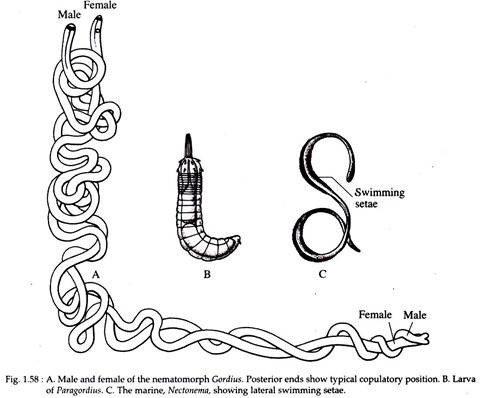
As we dive deeper into the world of nematomorph reproduction, we’ll explore their mating rituals, the life cycle of their eggs, and the distinct stages of their larvae. It’s a tale of survival, adaptation, and some weirdly wonderful science. So grab a coffee, get comfortable, and let’s untangle the details of these intriguing creatures.
Understanding Nematomorphs
Nematomorphs are quite the peculiar group of worms. They can grow up to several feet long and are usually found in aquatic environments. You might even spot them in freshwater bodies like ponds or streams, often writhing about. Visually, they’re thin and long, resembling your typical hair strand—hence the nickname, “horsehair worms.”
What’s particularly interesting about nematomorphs is their life cycle, which is divided into distinct stages: egg, larva, and adult. These stages highlight how they adapt to their environments and host organisms. Understanding these stages is crucial to grasp how they reproduce and thrive in various habitats.
Nematomorph Mating Habits
Let’s talk about the mating rituals of nematomorphs. Honestly, they can be quite the spectacle! When adult nematomorphs are ready to mate, they typically engage in a captivating dance. This dance involves males searching for females. Once they find a mate, they wrap around each other, often forming a tangled knot.
This entangled position isn’t just for show; it increases the likelihood of successful mating. This ritual can last for several hours and, at times, it seems chaotic. But remember, this is all part of their instinctual strategy to ensure their species continues. It’s like a wild dance party where only the most agile get to pass on their genes!
How Mating Occurs
During mating, a male nematomorph transfers sperm to a female. What’s wild is that after mating, females store this sperm in special sacs. This means they can fertilize their eggs at a later time, ensuring that environmental conditions are just right for the eggs to hatch. It’s a clever survival strategy—kind of like waiting for the perfect moment to cash in a winning lottery ticket.
After a successful mating session, the female will then lay her eggs. But where does she choose to do this?
Egg Laying and Development
Once mating is complete, female nematomorphs go on to lay their eggs. They often deposit them on damp surfaces, usually near or in water. Depending on the species, the eggs can be laid in clusters or scattered individually. This method ensures that a decent number of the eggs have a high chance of survival.
After about two to three weeks, the eggs hatch into larvae. It’s an exciting transformation that kicks off a whole new chapter of their life cycle. But what happens next?
The Journey of the Larvae
Once the larvae hatch, they have a rather adventurous life ahead of them. Typically, they’re aquatic and look quite different from their adult counterparts. These small larval forms are often parasitic, which means they need to find a suitable host to continue their development. How do they do that?
They usually enter hosts like insects, making their way into the host’s body. Once inside, they can manipulate their host’s behavior, driving it to water. This bizarre behavior is essential for the nematomorphs because it’s only in water that they can transform into their adult form and reproduce. It’s like a clever trick, ensuring their life cycle continues.
The Fascination of Nematomorphs in Nature
What’s truly remarkable about nematomorphs is how their reproductive strategy ties into the ecosystems they inhabit. Their lifecycle showcases the intricate relationships between species. The ability of nematomorph larvae to manipulate their host’s behavior highlights the complexity of parasitism in nature.
If you think about it, these worms play a role in controlling insect populations. Their presence in an ecosystem can influence the balance of different species, a fascinating example of how even the smallest creatures can impact their environment.
Why Nematomorph Reproduction Matters
Understanding nematomorph reproduction matters not just for scientific curiosity but also for conservation efforts. These creatures are sensitive to environmental changes, and studying their life cycles can give insights into the health of aquatic ecosystems. Plus, who wouldn’t want to know more about these bizarre yet captivating organisms?
The world of nematomorph reproduction is certainly a wild ride. From their unique mating dances to their captivating larval life, these creatures offer a glimpse into the complex interplay of life and survival. Through their fascinating reproductive strategies, nematomorphs remind us of the intricacies of nature and the importance of every organism, no matter how small.
So, the next time you find yourself near a pond or stream, take a moment to appreciate the strange creatures that might be lurking in the water. You never know what kind of hidden wonders are swimming just below the surface!
